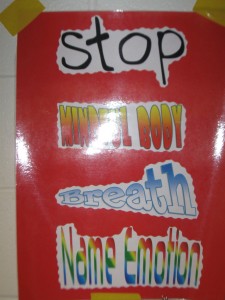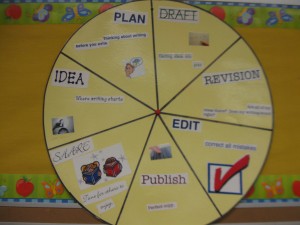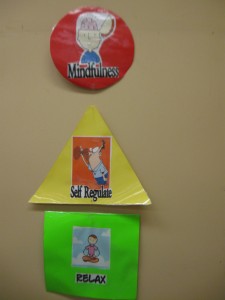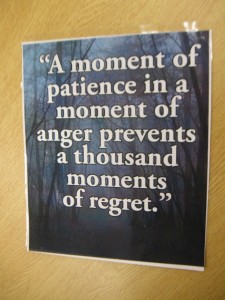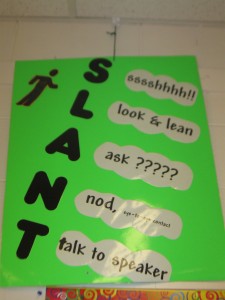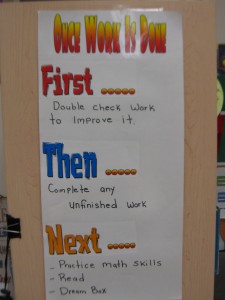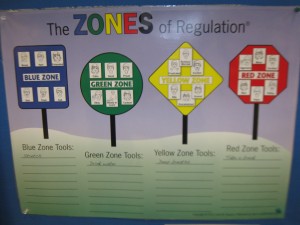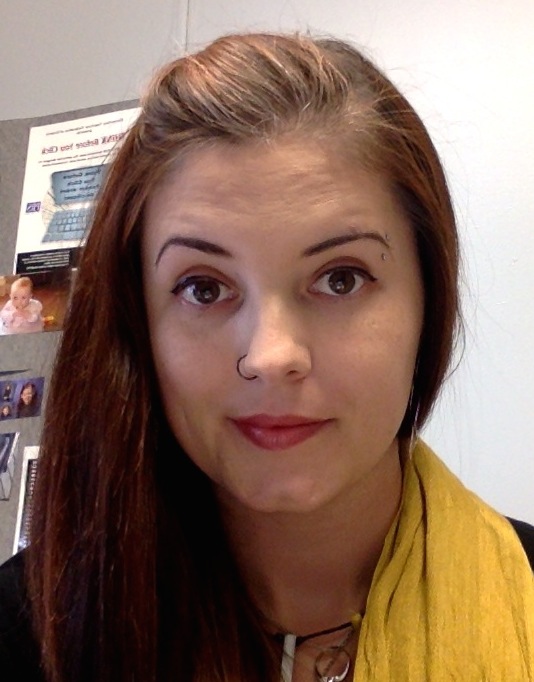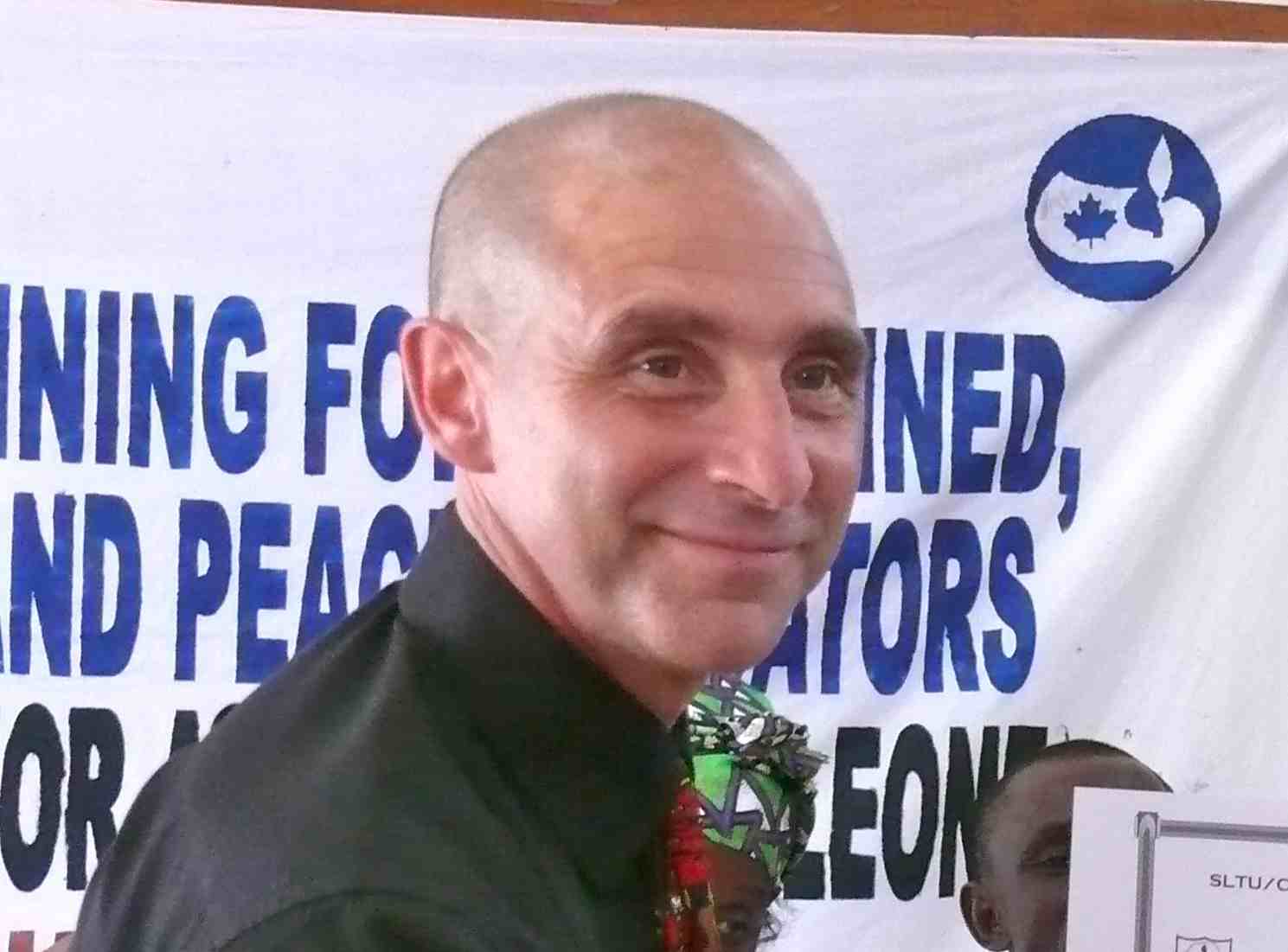One thing I really try to teach my students is a sense of ownership with regards to their education. All too often, I find students are content to just sit back, be told what to do and where to improve, and never think too hard about their own strengths and needs as learners. It isn’t ever as simple as just asking them what they think they did well and how they could improve next time, though – you have to start small and work up from there. Overall, I’ve found it a really rewarding experience to work with them to create goals, monitor their progress, and reflect on their learning.
I start on the very first day of school, where I ask them (among other things) what some of their goals are for the year ahead. Often my students’ goals are related to learning French, as I teach Middle French Immersion and it’s their first year in the program. I’ll ask them for a bit of detail – so instead of just saying “I want to get better at math,” I ask them what specifically they think they could be doing better in Math. It’s a good starting point to see what they think about themselves as learners. Sometimes it even highlights anxiety right from the start, as I have had students in the past give me a very long paragraph about how “bad” they are at reading, writing, multiplication, etc. It’s also usually very good insight into which students are highly motivated to learn and/or improve their French skills.
In mid-October, after we have gotten a few larger tasks finished and I have had time to see their learning skills and work habits in action, we have a discussion about the six different learning skills on the report card and what those mean for them in practice. I have them complete a self-evaluation using criteria that we develop as a class, giving themselves N, S, G, or E for each learning skill and answering two questions: What do you think you are doing really well? and What do you think you could be doing better? I limit them to only one area to improve, in order to focus their attention; otherwise, some students would put “everything” down for what they could improve.
This first self-evaluation often has students being WAY too hard on themselves. It’s why I always give them my own evaluation of their progress immediately afterwards, so they can see the comparison. Sometimes our opinions line up, sometimes our opinions are wildly different, but it’s an opportunity to have a dialogue with each student individually about what they think of themselves as learners and what I see as their teacher. We discuss both evaluations – mine and theirs – and then decide on a course of action. What will he/she be working towards improving? (Responsibility – managing time effectively and getting work done on or before the deadline.) How will he/she get there? (Break tasks down into steps and check in with the teacher regularly to ensure that he/she is on track.) How will we know that he/she has been successful? (If most work has been handed in on time, it’s probably an improvement!)
I send the student’s self-evaluation and our plan of action home with them when I send the Progress Report in November. It helps students be accountable to their parents about how they are doing in school. If a student is going to give him/herself an S for Collaboration, and I agreed, then the parent knows that it isn’t just me that sees it this way – the student is admitting that they need to work on this area. It allows an opportunity for students to speak with their parents about their strengths and needs, too, and vastly reduces the amount of explaining parents need ME to do come interview time.
By the time first term report cards come up, students have generally had a lot of time to work towards their goals and we can sit down and assess where they are, whether they feel good about their progress or not, etc. We do another self-evaluation following the same format as the first, and I again show them my own evaluation afterwards. We repeat the process: sit down and chat, compare evaluations, decide on a course of action, send both evaluations home with the report card. Sometimes students keep the same goal, if they and I feel that they have more work to do, but others have made good progress by this point and want to tackle another area of need instead.
For the last report card, I still have students do a self-evaluation, but I don’t help them plan the course of action that time. They’re expected to be able to reflect, think critically, and come up with their own plan of attack for how they will work towards their goal over the summer and/or as they enter the next school year. Overall, my students have been very successful with this kind of self-reflection and I have seen a tremendous amount of benefit in having them be accountable for their learning skills and work habits. It sends the message that I feel that the first page of the report card is every bit as important as the academics on the subsequent two pages, and I find that my students take their work habits MUCH more seriously in class knowing that we talk about them so often.
Sometimes I have students who honestly deserve an Excellent in all six skills and don’t have much space for “improvement,” so to speak. For these students, we try to find ways to encourage them to take on more of a leadership role in the classroom so that other students can benefit from their skills and confidence. This, too, has been highly beneficial, especially in a second language classroom. It lets them know that their work isn’t finished when they get their E and that there is always somewhere to go from there.
I would strongly encourage all teachers to talk to their students about that first page of their report card, break the language down to criteria they will understand (because honestly, some of those criteria on the report card are HARD to understand!), and get them to think critically about their strengths and needs as learners.




